
Over the years, the COMSOL Conference has been held at different locations around Europe, including Grenoble, France; Cambridge, U.K.; Lausanne, Switzerland; and Munich, Germany. In 2020, the COMSOL Conference was held online. Attendees were able to join minicourses, panel discussions, keynote talks, and more from the comfort of their own workstation. A virtual Presentation Hall showcased attendees’ papers, posters, and prerecorded oral presentations. Let’s take a look at the top projects from this year’s event…
Nearly 200 Presentations at the COMSOL Conference 2020 Europe
Researchers, scientists, academics, and simulation engineers from around Europe and the world presented 192 presentations in the online Presentation Hall, featuring 6 categories: electromagnetism; chemical, electrochemical, and bioengineering; multiphysics and optimization; heat transfer; structural mechanics and acoustics; and fluid flow.
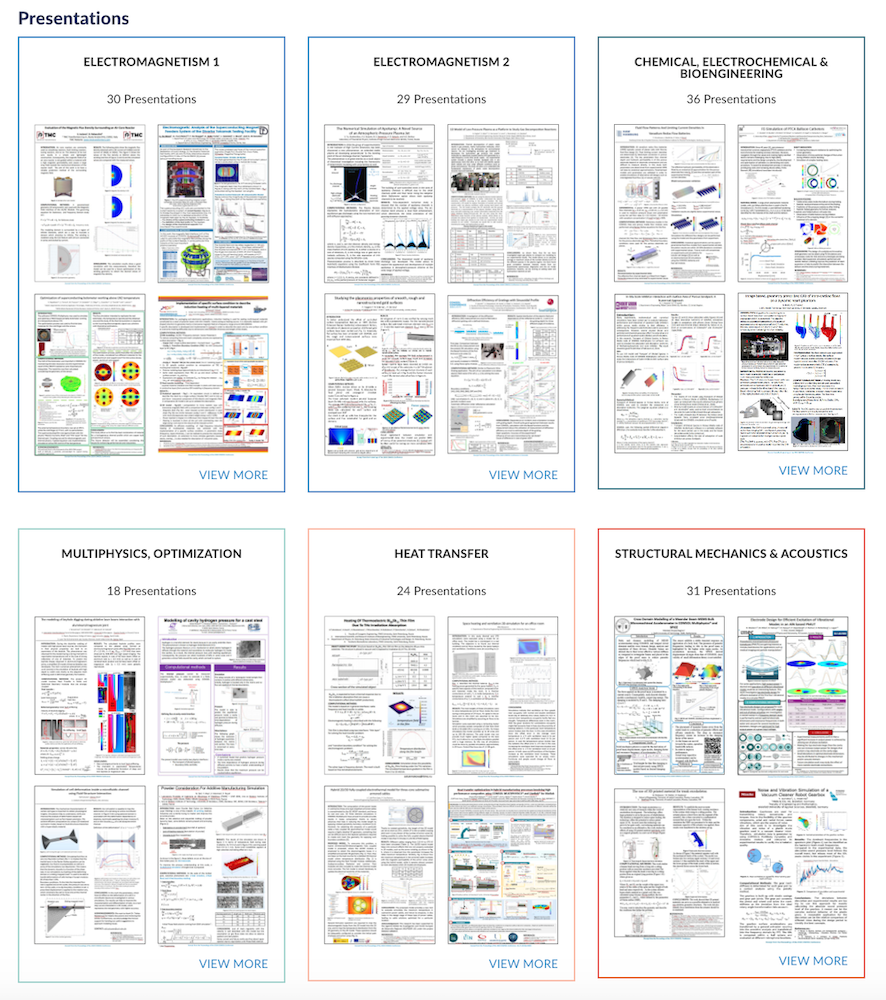
The virtual Presentation Hall at the COMSOL Conference 2020 Europe.
At the end of the event, 6 different user presentations were awarded Best Paper and Best Poster awards by the conference program committee. In addition, conference attendees voted for their favorite posters, of which 3 were then awarded the Best Poster by Popular Vote.
Top 3 Papers
“Compact Antennas for Digital TV Reception on Mobile Terminals”
The ability to access digital television services on devices like smartphones and tablets, or mobile terminals, creates a big challenge for antenna designers: Antennas need to be able to cover the entire digital terrestrial television (DTT) band, which ranges from 470 to 694 MHz.
Researchers from Fondazione LINKS, Radiotelevisione Italia (RAI), and Politecnico di Torino in Italy set out to determine if they could excite the characteristic modes of components of the antenna, including the ground layers and metal shielding, via capacitive coupling elements, thereby moving the resonances across the DTT band via a matching circuit.
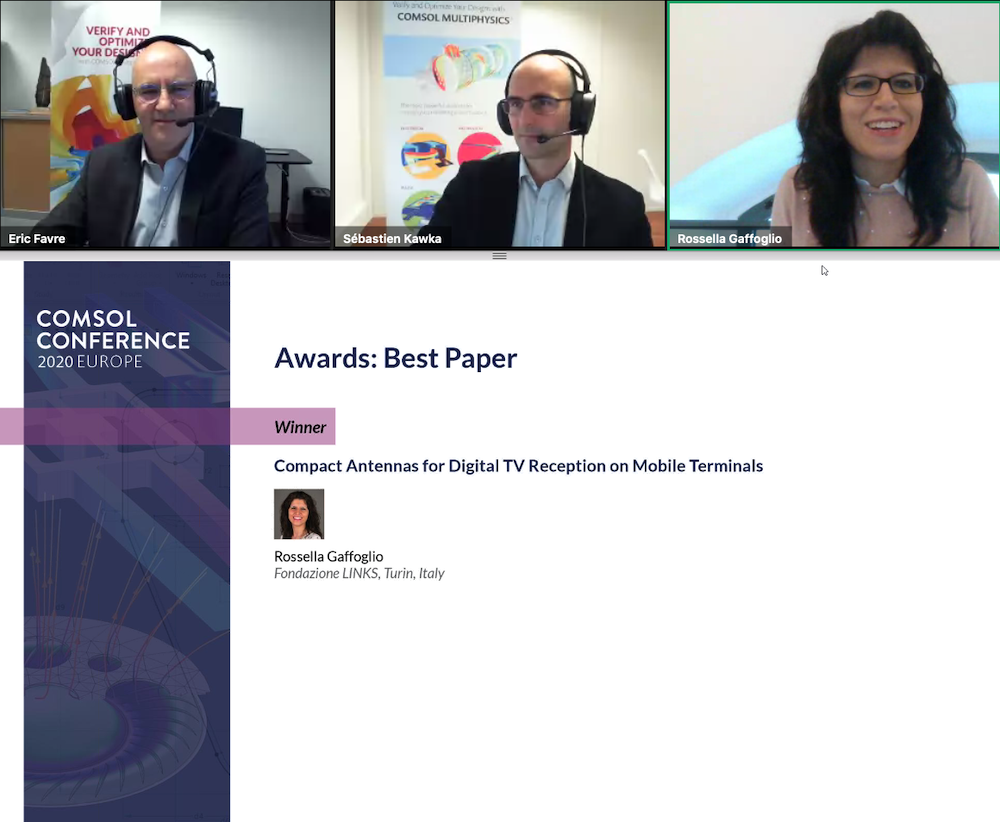
Rossella Gaffoglio from LINKS accepting the Best Paper award at the COMSOL Conference 2020 Europe from Eric Favre and Sebastien Kawka of COMSOL. Screenshot taken in the GoToWebinar® platform.
The researchers used the COMSOL Multiphysics® software to simulate the CE-based antenna’s behavior for different device sizes and coupling element positions. Their results showed good agreement with different experimental testing on prototyped antennas.
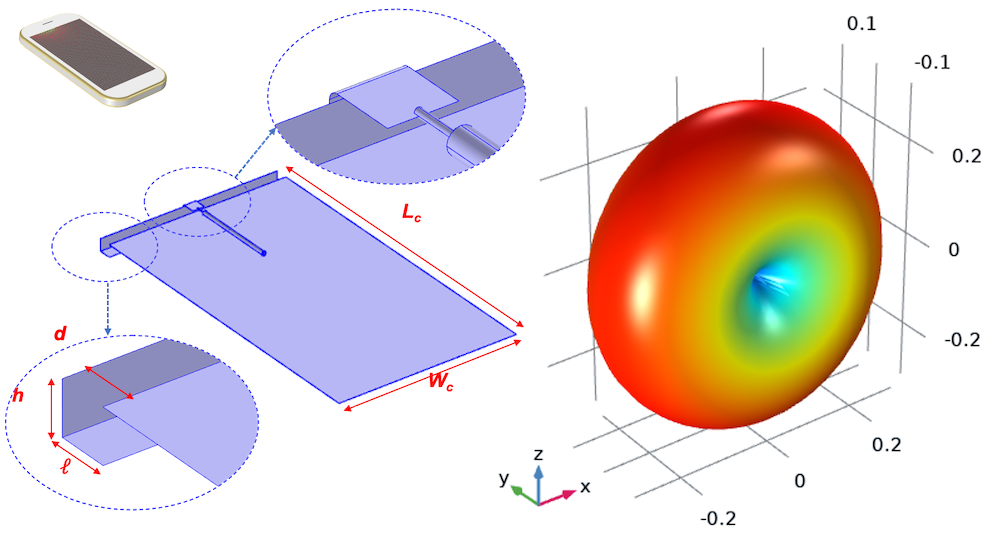
Simulated prototypes for the CE-based antenna design. Image from the presentation “Compact Antennas for Digital TV Reception on Mobile Terminals” from the COMSOL Conference 2020 Europe.
“Powder Consideration for Additive Manufacturing Simulation”
In industries such as aircraft, automotive, and energy, a type of additive manufacturing called laser powder bed fusion (LPBF) is becoming increasingly common. A lot of the current research into the process aims to avoid common and unwanted defects, like aggregates on the powder bed, a lack of feeding material, and an unstable end result.
Researchers from PIMM and the University of Bordeaux in France created a mesoscale LPBF model in order to understand the process better and avoid these defects. They turned to COMSOL Multiphysics due to the ability to accurately represent a multiphysics problem.
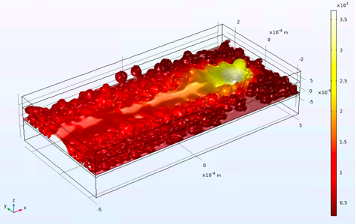
Thermal field at the interface in the LPBF process. Image from the presentation “Powder Consideration for Additive Manufacturing Simulation” from the COMSOL Conference 2020 Europe.
“Modeling Ion Production Inside an Electron Impact Ionizer for High-Vacuum Gas Analysis”
Residual gas analyzers (RGA) measure background gases and contaminants in vacuum systems. They include an ionizer component that ionizes the gas molecules, which are then accelerated and focused by an electrical field from the ion source, forming an ion beam. The ions in the system are discriminated by mass/charge ratio via a magnetic field, and then a detector captures the ions that are selected. Lastly, the ion charge flux at the detector is measured as current.
Researchers from TNO and Delft University in the Netherlands are using COMSOL Multiphysics to develop a contamination analyzer in order to detect contaminants in a high-vacuum system — in real time. Using the Electrostatics and Charged Particle Tracing interfaces, they were able to analyze the ion beam as a function of:
- Partial gas pressure
- Gas composition
- Emission current
- Source dimension
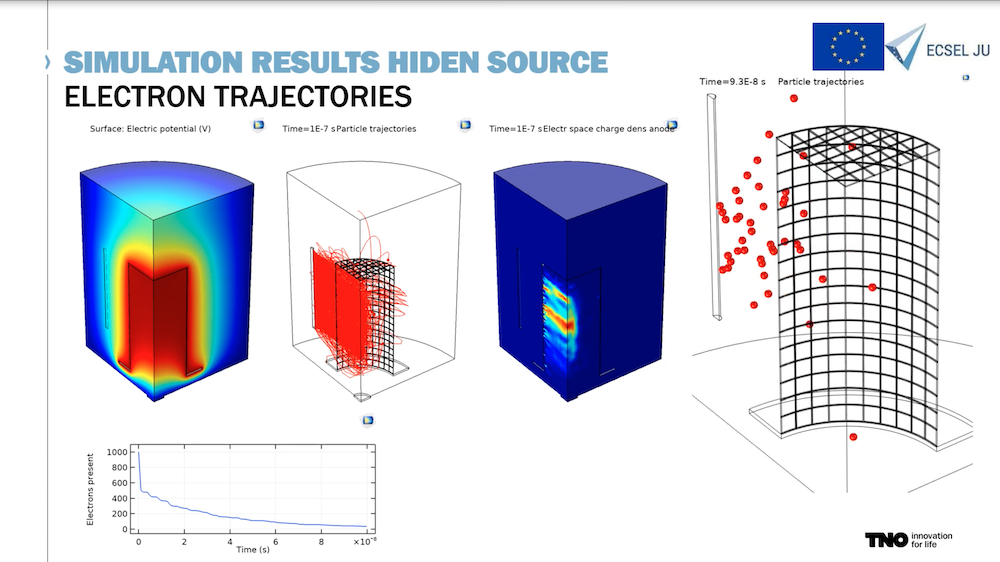
A screenshot from TNO’s prerecorded oral presentation, “Modeling Ion Production Inside an Electron Impact Ionizer for High-Vacuum Gas Analysis”, from the COMSOL Conference 2020 Europe.
Top 3 Posters
“Coupling PEST/PEST++ and COMSOL Multiphysics® for Hydrogeophysical Model Calibration Using Pilot Points”
Groundwater models are difficult to calibrate because the required direct hydraulic data is scarce. One way to estimate the hydraulic properties involved is by implementing a coupled inversion, where a calibration dataset is combined with geophysical data. This process calls for a multiphysics model as well as an inversion method that can produce realistic subsurface material properties.
Researchers from the University of Aberdeen in Scotland used an open-source software called PEST/PEST++ and coupled it with the COMSOL Multiphysics® software in order to calibrate their heterogeneous groundwater models with a multiphysics calibration dataset.
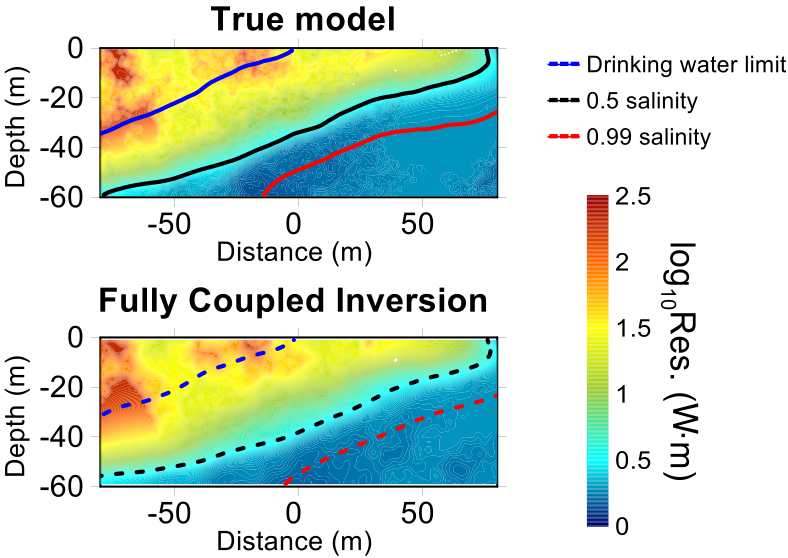
Image from the poster “Coupling PEST/PEST++ and COMSOL Multiphysics® for hydrogeophysical model calibration using pilot points” from the COMSOL Conference 2020 Europe.
“Modeling of an Industrial Scale Packed Bed Reactor for Steam Reforming Applications”
In the process of ammonia synthesis, single-tube packed bed reactors are typically used to provide hydrogen via steam reforming. A researcher from CASALE SA in Switzerland set out to model this system using the Chemical Reaction Engineering Module, which enabled the coupling of the mass, energy, and momentum equations necessary to describe the system.
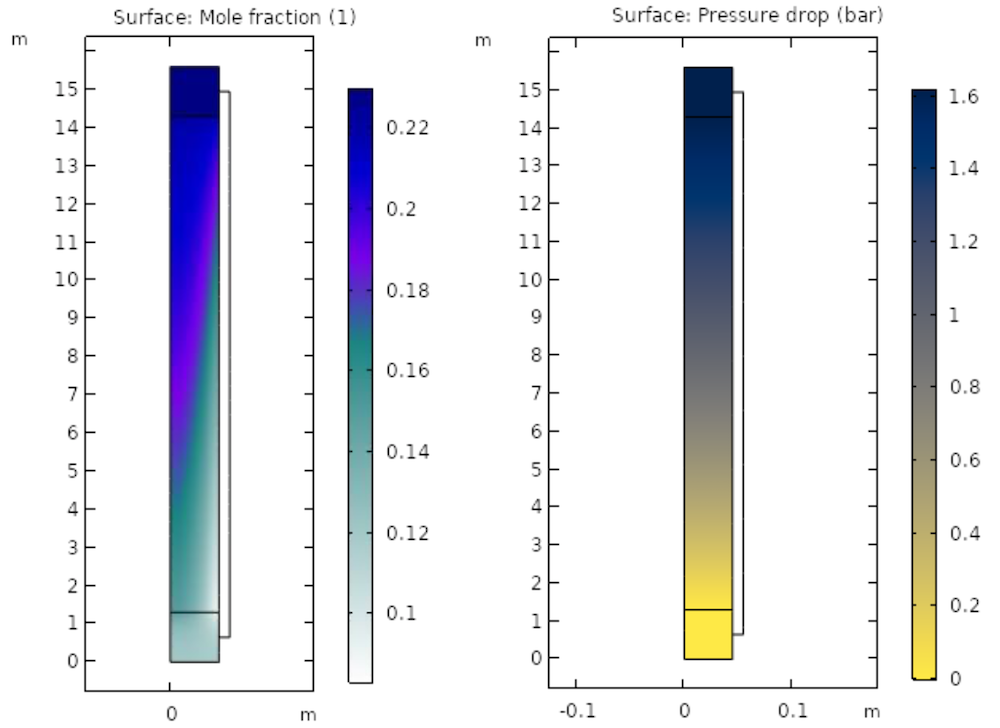
Mole fraction (left) and pressure drop (right) profiles for a packed bed reactor model. Images from the poster “Modeling of an Industrial Scale Packed Bed Reactor for Steam Reforming Applications” from the COMSOL Conference 2020 Europe.
The model was used to see how the reactor’s operating variables affect the:
- Methane mole fraction in the outlet gas stream
- Axial and radial temperature profiles along the reactor
The model results showed good agreement with industrial plant data, enabling efficient testing of porosity and reaction conditions on the packed bed reactor.
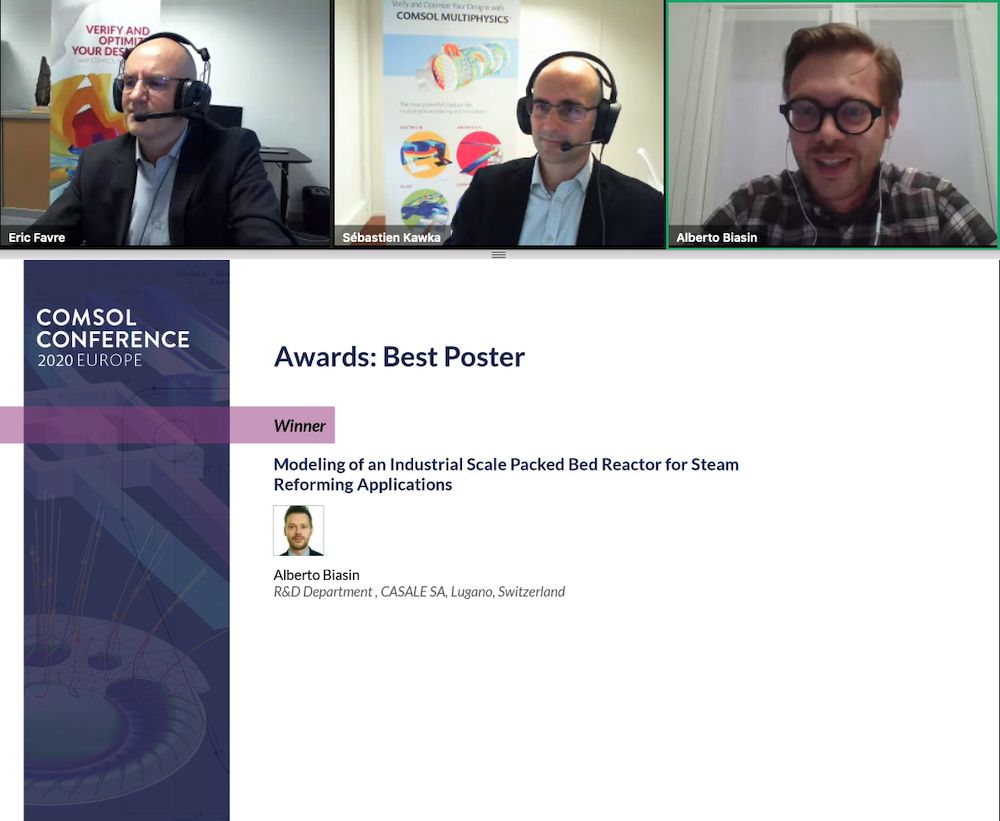
Alberto Biasin of CASALE accepting the Best Poster award from Favre and Kawka.
“CFD Modeling of a Commercial CVD System and Simulation of a CVD Deposition Process”
Seco Tools in Sweden relies on the chemical vapor deposition (CVD) process to coat the inserts they produce for machining metals. Performing an experimental test run of the CVD process is costly, and researchers at Seco sought to find a way to see how variations in the CVD coating’s thickness are affected by factors like:
- Gas flow
- Gas temperature
- Depletion of gas species
The researchers used the CFD Module and COMSOL Multiphysics to set up a model of a commercial CVD system. After verifying the model through in situ measurements of a test CVD system, they used the model to optimize process parameters, which enabled them to set up the CVD hardware in less time and with less costs than the traditional testing option.
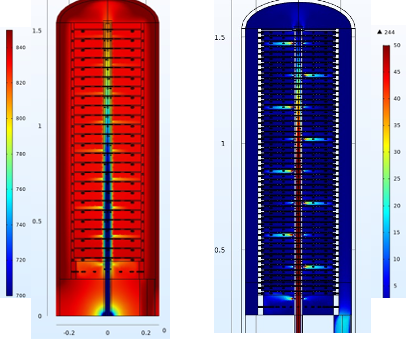
Gas temperature (left) and velocity distribution (right) in the full CVD setup. Image from the poster “CFD Modeling of a Commercial CVD System and Simulation of a CVD Deposition Process” from the COMSOL Conference 2020 Europe.
Audience Favorites
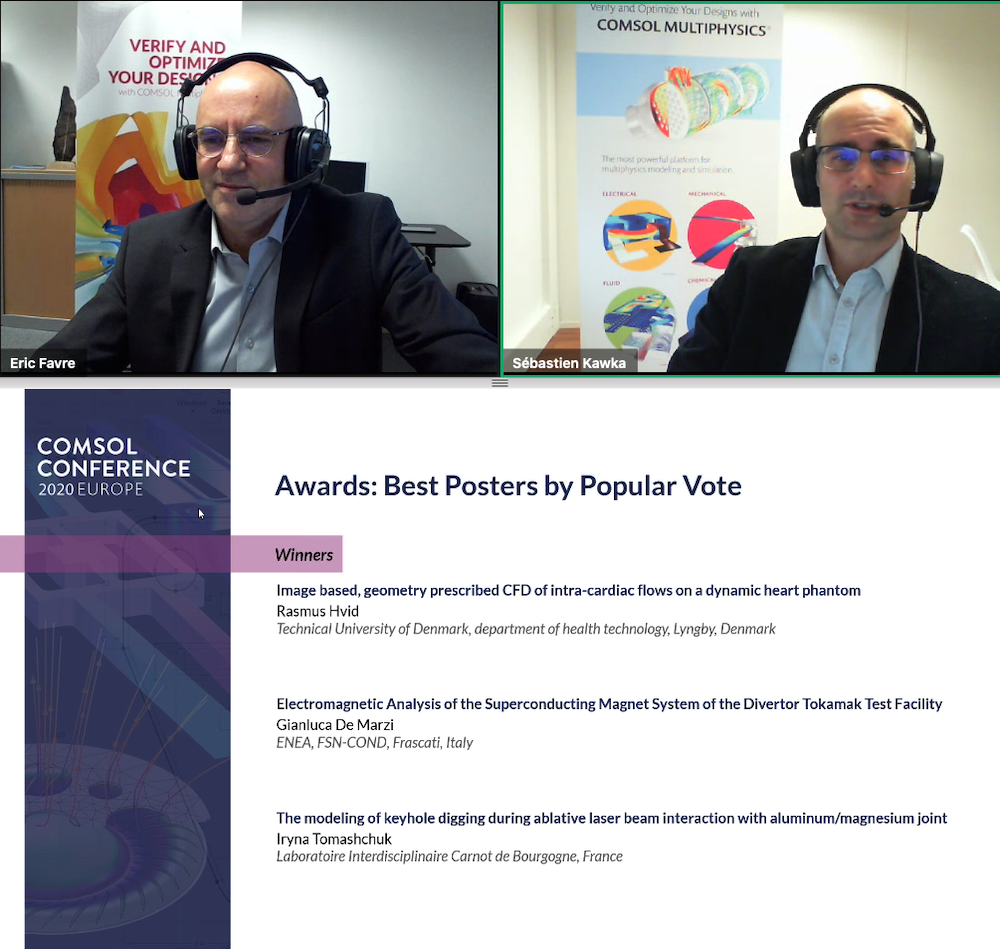
COMSOL’s Favre and Kawka announcing the winners of the Best Posters by Popular Vote award.
“Image-Based, Geometry-Prescribed CFD of Intracardiac Flows on a Dynamic Heart Phantom”
To analyze the fluid dynamics of a dynamic heart phantom, a researcher from the Technical University of Denmark used advanced imaging techniques as well as the COMSOL Multiphysics® software and MATLAB®.
The dynamic heart phantom was scanned using a technique called computed tomography angiography (CTA), which is used to provide time-dependent 3D images of the heart anatomy. The fluid domain was then segmented from a single time instance and imported into COMSOL Multiphysics® as a surface mesh, and the researcher performed the segmentation and volumetric image registration in MATLAB®.
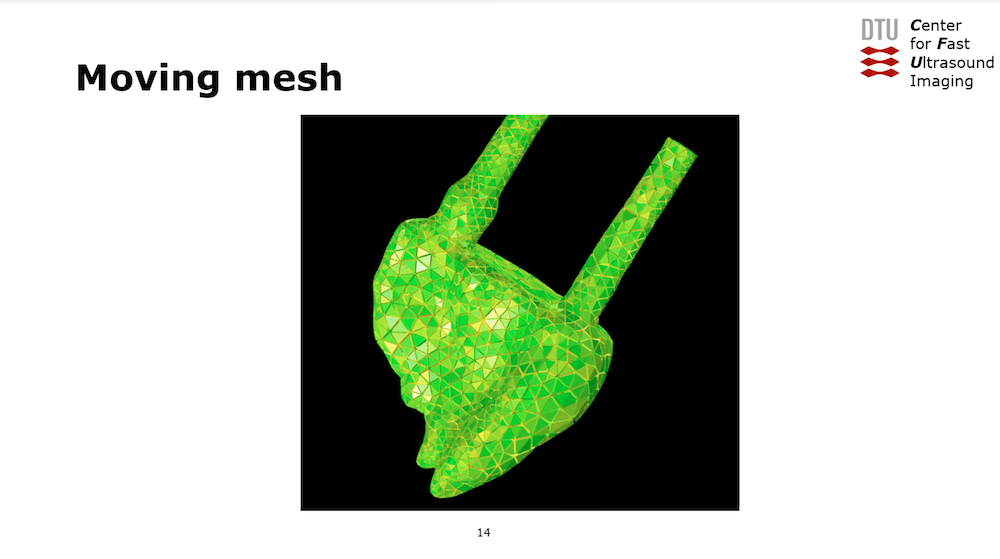
A screenshot from Technical University of Denmark’s prerecorded presentation, showing the mesh for the heart phantom model. Presentation from the COMSOL Conference 2020 Europe.
Through this work, the right phantom ventricle geometry and movement for geometry prescribed CFD was recreated in a COMSOL Multiphysics model. The result? The ability to make direct comparisons with other imaging methods, such as ultrasound.
“Electromagnetic Analysis of the Superconducting Magnet System of the Divertor Tokamak Test Facility”
The Divertor Tokamak Test (DTT) facility is part of the European Research Roadmap to the Realization of Fusion Energy. The facility aims to study different configurations of the divertor tokamak to help with issues of power exhaust handling.
In the divertor, superconducting coils (SC) connect to current leads by a current feeder system. Researchers from ENEA, DTT S.c.a.r.l., and Sapienza Università di Roma performed a detailed evaluation of the magnetic field seen by the SC feeders. Using the AC/DC Module and COMSOL Multiphysics, they were able to calculate the magnetic field profiles along the paths of the current feeders for specific, and important, plasma scenarios in the DTT.
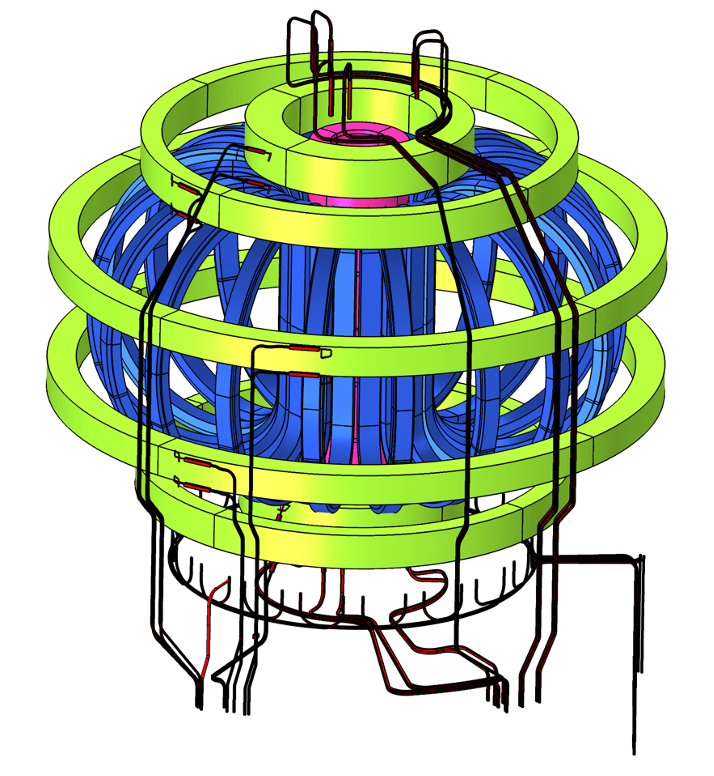
Model of the DTT magnet system and current feeders, showing the TF coils (blue), PF coils (green), CS (magenta), and feeders (black). Image from the poster “Electromagnetic Analysis of the Superconducting Magnet System of the Divertor Tokamak Test Facility” from the COMSOL Conference 2020 Europe.
“The Modeling of Keyhole Digging During Ablative Laser Beam Interaction with Aluminum/Magnesium Joint”
When welding metals with high-power laser sources, the mismatch in their physical properties, such as vaporization temperature and reflectivity, can cause asymmetry of the keyhole. Researchers from Laboratoire Interdisciplinaire Carnot de Bourgogne in France and Jouf University in Saudi Arabia developed a simplified 2D thermal ablation model to study and predict keyhole shapes in aluminum and magnesium joints.
To predict the keyhole shapes observed in aluminum/magnesium joints, the group developed a simplified 2D model of thermal ablation. The goal of this work was to successfully simulate the keyhole with a high depth-to-width ratio, thanks to the adaptive mesh stiffening used in deformed geometry formulation.
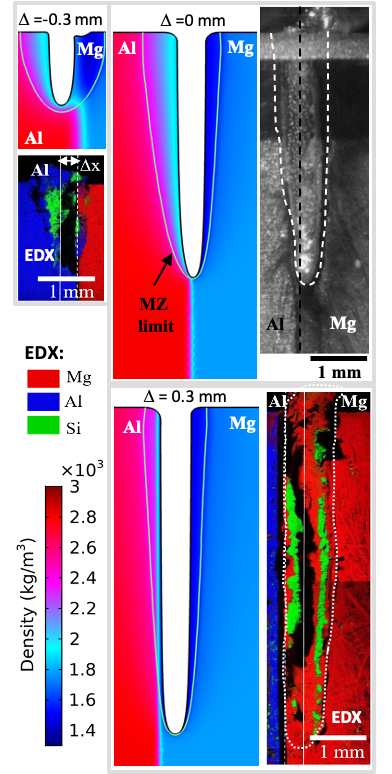
Comparing the calculated (density field) and experimental interaction zone in aluminum/magnesium joint. Image from the poster “The Modeling of Keyhole Digging During Ablative Laser Beam Interaction with Aluminum/Magnesium Joint” from the COMSOL Conference 2020 Europe.
Congratulations and Thank You!
Congratulations to the winners of the Best Paper and Best Poster awards of the COMSOL Conference 2020 Europe. We enjoyed learning about your inspiring, innovative, and exciting research across all fields of engineering and science.




Comments (1)
Telkom University
June 22, 2024What are the characteristic modes of antenna components such as ground layers and metal shielding, as discussed in the study?